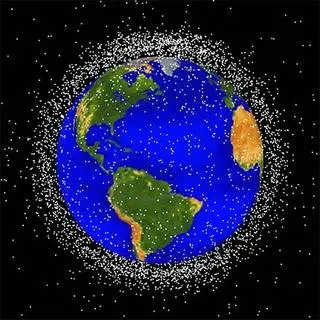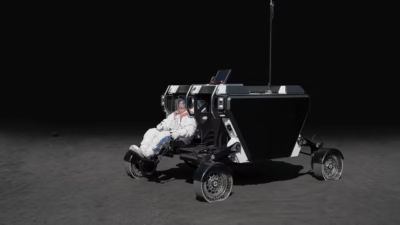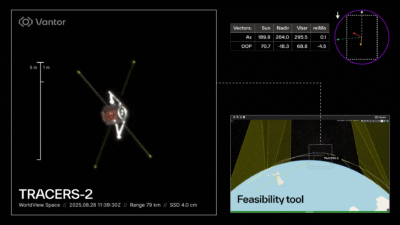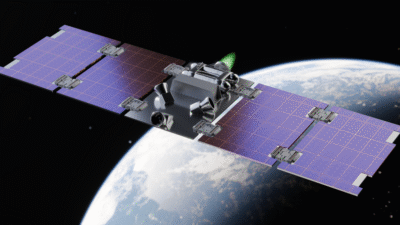A Celestial Traffic Jam
The night sky has become increasingly crowded. As thousands of satellites orbit Earth, many burning up as brilliant fireballs during reentry, scientists and space agencies are raising urgent concerns about the long-term sustainability of our orbital environment. The rapid expansion of mega-constellations like Starlink has transformed space operations, but it has also intensified debates about space debris, collision risks, and the environmental impact of satellite reentry.
Understanding these challenges is crucial as humanity becomes increasingly dependent on space-based technologies for communication, navigation, weather forecasting, and scientific research.
What Is Space Debris and Why Does It Matter?
Space debris, often called “space junk,” refers to defunct human-made objects orbiting Earth. This includes non-functional satellites, spent rocket stages, fragments from collisions, and even paint flecks traveling at tremendous speeds. Currently, more than 34,000 pieces of debris larger than 10 centimeters are tracked by space surveillance networks, with millions of smaller fragments remaining undetected.
The danger lies in velocity. Orbital debris travels at speeds exceeding 17,500 miles per hour. At these velocities, even a small fragment can cause catastrophic damage to operational satellites or crewed spacecraft. A single collision can create thousands of new debris pieces, potentially triggering a cascading effect known as Kessler syndrome. In this scenario, collisions generate so much debris that certain orbital regions become unusable.
The Low Earth Orbit Problem
Low Earth orbit (LEO), spanning altitudes between 160 and 2,000 kilometers, has become the most congested orbital region. This zone hosts the majority of active satellites, including communication networks, Earth observation systems, and scientific missions. The concentration of objects in LEO increases collision probability and complicates space traffic management efforts.https://scienceandaerospace.blog/space/the-importance-of-international-collaboration-in-space/
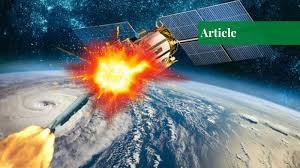
Satellite Reentry: Fireballs in the Sky
When satellites reach the end of their operational life, they must be safely disposed of to prevent adding to the debris problem, for satellites in LEO, controlled or uncontrolled reentry into Earth’s atmosphere is the primary deorbiting method. As these objects plunge through the atmosphere at hypersonic speeds, friction generates extreme heat, causing them to disintegrate and create spectacular fireballs visible from the ground.
How Satellite Reentry Works
During atmospheric reentry, satellites encounter increasing air density as they descend. The resulting aerodynamic heating can reach temperatures exceeding 1,500 degrees Celsius, sufficient to vaporize most materials. Larger satellites may not completely burn up, with some components, particularly dense materials like titanium or stainless steel, potentially surviving to reach Earth’s surface.
Space agencies typically aim for controlled reentries over unpopulated ocean areas, particularly the South Pacific Ocean Uninhabited Area, nicknamed the “spacecraft cemetery.” However, uncontrolled reentries introduce uncertainty about where surviving debris might land.
The Starlink Reentry Phenomenon
SpaceX’s Starlink constellation has brought satellite reentry into public awareness. With plans to deploy tens of thousands of satellites to provide global internet coverage, Starlink has already launched more than 5,000 satellites as of early 2025. These satellites have relatively short operational lifespans of approximately five years before they deorbit and reenter the atmosphere.
Reports of Starlink satellites creating bright fireballs during reentry have become increasingly common worldwide. While SpaceX designs these satellites to disintegrate completely during reentry, minimizing ground impact risks, the sheer volume of regular reentries raises questions about cumulative atmospheric effects and long-term sustainability.
Orbital Sustainability: The Environmental and Operational Challenge
Orbital sustainability refers to conducting space activities in ways that preserve the space environment for future generations. This concept encompasses debris mitigation, responsible satellite design, end-of-life disposal, and international cooperation on space traffic management.
Environmental Concerns of Mass Satellite Reentry
Recent research has begun examining the atmospheric impact of satellite reentry. When satellites burn up, they release metals and other materials into the upper atmosphere. With mega-constellations planning to deorbit hundreds or thousands of satellites annually, scientists worry about potential effects on atmospheric chemistry, ozone layers, and climate.
Aluminum oxide particles from satellite reentry could accumulate in the mesosphere and stratosphere, potentially affecting atmospheric processes we don’t yet fully understand. The scale of this problem grows with each new satellite constellation proposed or deployed.
The Mega-Constellation Dilemma
Companies like SpaceX, Amazon (Project Kuiper), OneWeb, and numerous others have announced plans for massive satellite constellations. While these systems promise expanded global connectivity, they also multiply concerns about:
- Increased collision risks from higher satellite density
- Light pollution affects astronomical observations
- Radio frequency interference impacting scientific research
- Atmospheric contamination from continuous reentries
- Space traffic coordination challenges
The tension between technological progress and environmental stewardship has never been more apparent in the space sector.
Solutions and Mitigation Strategies
Addressing the space debris and orbital sustainability crisis requires coordinated action across multiple fronts. Governments, space agencies, and private companies are developing various approaches to ensure the long-term viability of space operations.
International Guidelines and Regulations
The United Nations Committee on the Peaceful Uses of Outer Space (COPUOS) has established space debris mitigation guidelines, which many spacefaring nations have adopted. These recommendations include:
- Limiting debris released during normal operations
- Minimizing breakup potential during operational phases
- Post-mission disposal within 25 years of mission completion
- Avoiding intentional destruction, creating long-lived debris
However, these guidelines lack enforcement mechanisms, and compliance remains voluntary. Calls for binding international regulations continue to grow as the debris problem intensifies.
Active Debris Removal Technologies
Innovative technologies are being actively developed to remove existing debris from orbit. These include:
- Robotic capture systems using nets, harpoons, or robotic arms
- Laser ablation to alter debris trajectories
- Electrodynamic tethers to accelerate orbital decay
- Drag augmentation devices to expedite atmospheric reentry
Several demonstration missions have shown promise, but scaling these technologies to address the tens of thousands of debris objects remains economically and technically challenging.
Sustainable Satellite Design
Next-generation satellites increasingly incorporate sustainability features:
- Demisable materials that completely vaporize during reentry
- Propulsion systems for controlled deorbiting
- Collision avoidance systems with autonomous maneuvering
- Modular designs enabling in-orbit servicing and life extension
- Lower orbital altitudes for faster natural decay
SpaceX has implemented several of these features in newer Starlink satellites, including improved deorbit capability and reduced reflectivity to minimize light pollution.
Space Traffic Management
Effective space traffic management systems are essential for preventing collisions. This requires:
- Enhanced tracking of small debris objects
- Standardized communication protocols between operators
- Predictive analytics for conjunction assessment
- Automated collision avoidance systems
- International data sharing agreements
The U.S. Space Force’s 18th Space Defense Squadron currently tracks objects and issues conjunction warnings, but the growing number of satellites demands more sophisticated, globally coordinated systems.
The Path Forward: Balancing Innovation and Responsibility
The expansion of space activities presents humanity with a critical choice. We can continue current practices and risk rendering valuable orbital regions unusable, or we can proactively implement sustainable space operations that protect this unique environment.
Economic and Strategic Considerations
Space-based services contribute hundreds of billions of dollars annually to the global economy. Satellites enable GPS navigation, weather forecasting, disaster response, agricultural monitoring, and countless other applications. Losing access to key orbital regions due to debris proliferation would have devastating economic and societal consequences.
National security also depends on space assets. Military communications, reconnaissance, and early warning systems all rely on satellites. Protecting the orbital environment becomes a matter of strategic importance for all spacefaring nations.
The Role of Private Industry
Private space companies have become the dominant force in satellite deployment. Their cooperation is essential for achieving orbital sustainability. Industry initiatives like the Space Safety Coalition and Net Zero Space demonstrate growing awareness, but voluntary commitments must translate into concrete actions.
Market incentives, insurance requirements, and potential liability frameworks may encourage more responsible practices. Some experts advocate for orbital use fees or deposit systems to internalize the environmental costs of space operations.
Safeguarding Our Orbital Commons
Space debris, satellite reentry, and orbital sustainability represent interconnected challenges that will define the future of space exploration and utilization. The spectacular fireballs of reentering Starlink satellites serve as visible reminders of humanity’s growing footprint beyond Earth’s surface.
Solving these problems requires international cooperation, technological innovation, regulatory frameworks, and a fundamental shift toward viewing orbital space as a finite resource requiring careful stewardship. The decisions made today will determine whether future generations inherit an accessible, sustainable space environment or a debris-filled barrier blocking humanity’s path to the stars.
As we continue expanding our presence in space, we must ensure that progress doesn’t come at the cost of environmental degradation, whether on Earth or in orbit. The sustainability of our orbital infrastructure is not just a technical challenge; it’s a test of our ability to manage the commons that all humanity shares responsibly.

